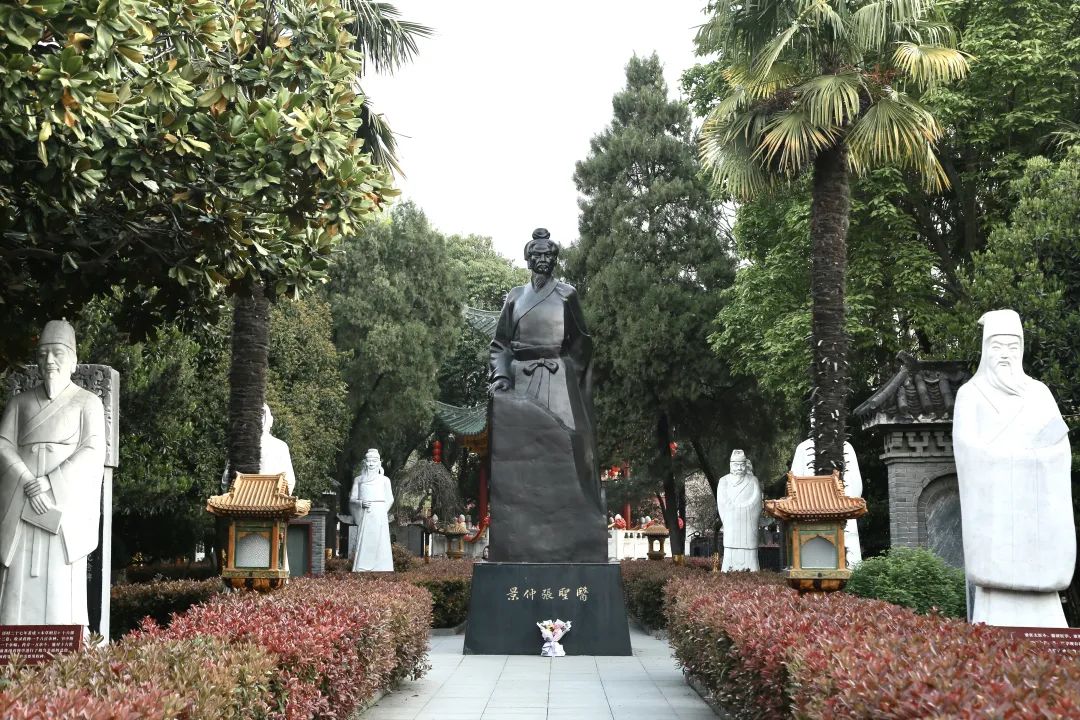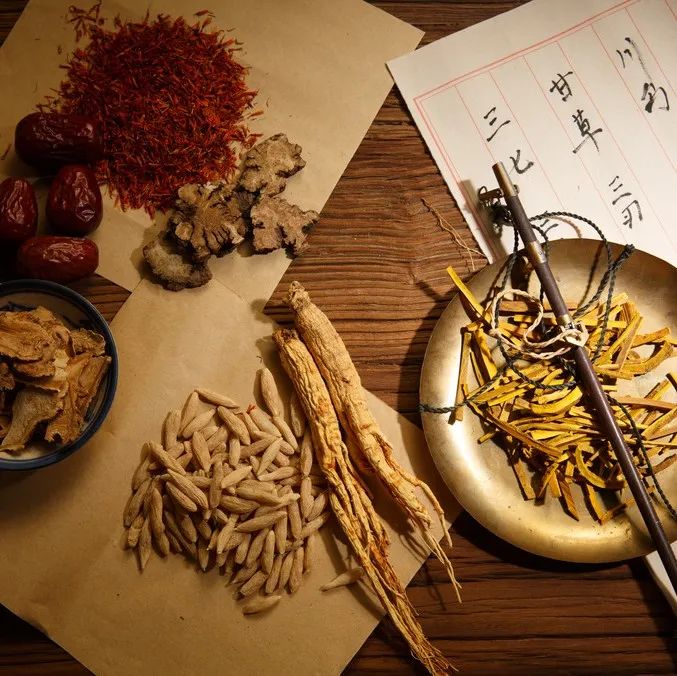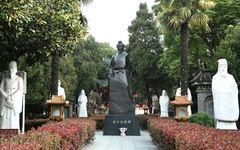“Zhongjing Medicine” is a monumental achievement in the history of Traditional Chinese Medicine (TCM), and Zhang Zhongjing himself is revered as the “Saint of Medicine.” His work, the Treatise on Cold Damage (Shang Han Lun), is hailed as a “timeless classic” and “the ancestor of formula books,” serving as a foundational text for the clinical treatment system of TCM and one of the most important classics in TCM, profoundly influencing clinical practice.
There is no TCM practitioner who does not study the Treatise on Cold Damage; without studying it, one cannot truly become a TCM practitioner! The best way to commemorate Zhang Zhongjing is to inherit, apply, and promote his academic essence. Therefore, today we will revisit the three steps to mastering the Treatise on Cold Damage.

1Memorize the Original Text
It is essential to memorize the original text; merely memorizing it is not enough.Anyone who wants to learn TCM from me, whether they are my graduate students, apprentices, or students I have taught, must start by memorizing the Treatise on Cold Damage.If you are unwilling to memorize the Treatise on Cold Damage, do not say you want to learn TCM. To learn TCM, one must study the Treatise on Cold Damage, and the first step is to memorize the original text. Without memorization, it is impossible to truly understand it. Initially, it is fine to remember without understanding; as long as you remember, you will eventually understand. If you cannot remember, claiming to understand is useless; if you open the book to understand but cannot remember after closing it, you will not be able to apply it clinically (do patients wait for you to flip through books or phones during consultations???). If you remember the 379th clause, “For those who vomit and have a fever, the Xiao Chai Hu Decoction (Xiao Chai Hu Tang) is the main treatment,” you can use it. When you see a patient with fever and vomiting, just use Xiao Chai Hu Decoction, even if you do not fully understand it yet; you can gradually come to understand it. The Treatise on Cold Damage consists of aphoristic clauses, with the syndrome presented first and the formula following.Once you memorize the original text, you can apply it. When you apply it, it will be effective, and your interest and confidence in learning will naturally grow. Many people struggle to learn TCM because they do not master the Treatise on Cold Damage, and they fail to master it because they are unwilling to put in the hard work to memorize it. They always want to understand first, hoping that understanding will lead to memorization, but the result is often contrary to their wishes, and they remain outside the door of TCM for a lifetime.I studied the Treatise on Cold Damage seriously for six years.The first three years were because I needed to pass the entrance exam for the Hubei University of Chinese Medicine’s graduate program in Treatise on Cold Damage, during which I primarily memorized the text, to the point where I could recite the original text upon hearing the clause number and vice versa.After being accepted into the graduate program, I studied the Treatise on Cold Damage for another three years under my esteemed teachers, Li Peisheng and Mei Guoqiang.After starting my career, I taught the Treatise on Cold Damage at the Graduate School of the China Academy of Chinese Medical Sciences and Beijing University of Chinese Medicine, dedicating my life to learning, teaching, and applying the Treatise on Cold Damage.Nowadays, many people look down on rote memorization, believing that one should understand before memorizing, or even think that memorization is unnecessary because they can rely on smart devices to retrieve information. However, being a doctor is a labor-intensive job, and most knowledge must be memorized first. Classic texts must be memorized, the properties, meridian affiliations, effects, indications, contraindications, methods of use, and dosages of Chinese herbs must be memorized, as well as the composition, dosages, effects, indications, and preparation methods of formulas. The pathways of meridians and acupuncture points must also be memorized; without this knowledge, one cannot be a doctor.Understanding is not unnecessary, but memorization must come first.
2Focus on “Specific Syndrome-Formula Relationships”
The Treatise on Cold Damage consists of clauses that primarily discuss the relationship between syndromes and formulas. Below, I will discuss some clauses related to the Gui Zhi Decoction (Gui Zhi Tang) as an example. For example, “For Taiyang wind strike, with Yang floating and Yin weak, Yang floating indicates heat is self-releasing, and Yin weak indicates sweating occurs; if there is aversion to cold, aversion to wind, fever, nasal congestion, and dry vomiting, Gui Zhi Decoction is the main treatment.” (Clause 12)“For Taiyang disease, if the exterior symptoms have not resolved and the pulse is floating and weak, one should resolve it with sweating, Gui Zhi Decoction is appropriate.” (Clause 42)“For Taiyang disease, if one initially takes Gui Zhi Decoction and becomes agitated without resolution, one should first needle Fengchi (GB20) and Fengfu (DU16), then take Gui Zhi Decoction to recover.” (Clause 24)“If one takes Gui Zhi Decoction and sweats profusely, with a large pulse, continue with Gui Zhi Decoction as before; if the symptoms resemble malaria and recur in one day, sweating will definitely resolve it, Gui Zhi Decoction with two Ma Huang (Ma Huang) is appropriate.” (Clause 25)“For Taiyang disease, after purging, if the Qi rises, Gui Zhi Decoction can be used, following the previous method; if it does not rise, it should not be used.” (Clause 15)“For Taiyang disease, three days have passed, and sweating has been induced, if there is vomiting, purging, or warming needle treatment, and it still does not resolve, this is a serious condition, and Gui Zhi Decoction should not be used. Observe the pulse and symptoms to determine what is wrong and treat accordingly. Gui Zhi is primarily for resolving the exterior; if the person has a floating and tight pulse, with fever and no sweating, it should not be used.” (Clause 16)The Treatise on Cold Damage is mainly composed of such clauses. These clauses do not exhibit the characteristics of the Six Meridians differentiation nor the syndrome differentiation and treatment characteristics; they only present syndromes and formulas.The vast majority of the clauses follow a similar format, with the syndrome presented first and the formula following, linking the syndrome and formula together. This is the syndrome-formula relationship.The main content of these clauses is the syndromes and formulas, discussing the applicability of syndromes and formulas.For a formula, the relationship with the syndrome can be categorized into several levels:1. Some syndromes have a specific applicability level, meaning they can achieve the effect of “main treatment”;2. Some syndromes have a general applicability level, meaning they are “appropriate”;3. Some syndromes have a possible applicability level, meaning they can be “used with”;4. Some syndromes have a non-applicability level, meaning they “should not be used with.”This is the main pattern of the clauses in the Treatise on Cold Damage.The above discussion of the Gui Zhi Decoction clauses focuses on the relationship between the syndrome and Gui Zhi Decoction, specifically which syndromes can be treated with Gui Zhi Decoction, which are appropriate for it, which can be used with it, and which should not be used with it.“Specific syndrome-formula relationships” refer to the specific connections between formulas and syndromes that can achieve the effect of “formula to syndrome resolution,” characterized by precision, speed, and efficiency.“Formula to syndrome resolution” can be colloquially understood as “medication resolves the disease,” but this phrase is more suitable for describing the efficacy of Western medicine, as Western medicine treats diseases as units and uses medications as treatment methods. In contrast, TCM treats syndromes as units and uses formulas as treatment methods, although there are instances where medications are used as treatment methods, such as single herbs, but this is rare.Syndromes are the treatment targets in TCM, while formulas are the treatment methods. The degree of connection between syndromes and formulas determines the effectiveness of treatment. The “specific syndrome-formula relationship” is the highest level of connection between syndromes and formulas, representing the best efficacy achievable in TCM, that is, formula to syndrome resolution, which is also the special effect.In the Treatise on Cold Damage, all formulas that are labeled as “main treatment” mostly belong to “specific syndrome-formula relationships,” which are the essence of syndrome-formula relationships. To learn the Treatise on Cold Damage, one must first grasp the “specific syndrome-formula relationships” and then, based on the original intent of the Treatise on Cold Damage, continuously expand and explore “specific syndrome-formula relationships” in conjunction with clinical practice. The more “specific syndrome-formula relationships” one masters, the better the clinical efficacy.The core of the Treatise on Cold Damage is the syndrome-formula relationship, and the essence of the syndrome-formula relationship is the “specific syndrome-formula relationship.”
3Understand Zhang Zhongjing’s Original Intent
First, let’s look at a case study of Gui Zhi Decoction.A patient, Liu, a 45-year-old male, developed a fever of 37.8 degrees Celsius after exposure to cold, with no sweating, aversion to cold, significant headache in the back of the head, discomfort in the neck, nasal congestion with clear discharge, unformed stools, no sore throat, no thirst, a pale tongue with teeth marks and thin white coating, and a floating weak pulse. He usually has loose stools and is prone to diarrhea.Prescription: 15g Gui Zhi, 15g Bai Shao (White Peony), 5 slices of Sheng Jiang (Fresh Ginger), 12 dates, and 6g Zhi Gan Cao (Honey-fried Licorice). One dose, using 1200ml of water, boil down to 600ml, divided into three doses to be taken warm. The temperature of the decoction should be slightly higher, with a mild warming sensation. After taking the medicine, the patient should consume 200ml of hot thin porridge and cover himself with a blanket for 2 hours, resulting in slight sweating and recovery.How can Gui Zhi Decoction be used for a patient with no sweating?This requires understanding Zhang Zhongjing’s original intent.Regarding the efficacy of Gui Zhi Decoction, Zhang Zhongjing states in Clause 16, “Gui Zhi is primarily for resolving the exterior; if the person has a floating and tight pulse, with fever and no sweating, it should not be used.” This clearly indicates that the efficacy of Gui Zhi Decoction differs from that of Ma Huang Decoction (Ma Huang Tang) in terms of inducing sweating. Without understanding the essence of “resolving the exterior,” one cannot truly learn to apply Gui Zhi Decoction.So, what does “resolving the exterior” mean?There are two interpretations in various textbooks. One is “to eliminate the pathogenic factors from the exterior,” and the other is “to resolve the exterior and dispel wind, serving as a mild sweating agent.” Neither explanation clarifies the true meaning of “resolving the exterior.”I offer a definition: “Resolving the exterior” is a method of achieving the restoration of the Ying and Wei (nutritive and defensive Qi) functions through tonifying the Spleen and Stomach, thereby allowing the exterior to release the pathogenic factors through sweating.Gui Zhi Decoction is a typical representative of this principle. The term “exterior” also refers to the muscles.Compared to Ma Huang Decoction, the syndrome of Gui Zhi Decoction is deeper, as it pertains to the Spleen and Stomach, with the treatment goal being to tonify the Spleen and Stomach. Therefore, the essence of Gui Zhi Decoction is to tonify the Spleen and Stomach while dispelling external pathogens.① From the analysis of the formula composition, Gui Zhi Decoction belongs to a warm and sweet formula, which not only has the effect of resolving the exterior and dispelling wind but also can tonify the Middle Jiao and strengthen the Stomach Qi.Gui Zhi is warm and sweet, which can resolve the exterior and dispel wind, warm and unblock the blood vessels, and also tonify the Spleen and Stomach. The Shen Nong Ben Cao Jing states it “is used for cough, counterflow Qi, throat obstruction, vomiting, and benefits the joints, tonifying the Middle and enhancing Qi.”Sheng Jiang is warm and can assist Gui Zhi in dispelling pathogens while also warming and tonifying the Stomach.Zhi Gan Cao is sweet and neutral, benefiting Qi and tonifying the Spleen.Da Zao (Jujube) is sweet and neutral, tonifying the Spleen and Stomach, nourishing the Ying and blood.Bai Shao is sour, bitter, slightly cold, nourishing blood and consolidating the Ying. The Shen Nong Ben Cao Jing states it “is used for abdominal pain due to pathogenic Qi, alleviating blood stasis, breaking up cold and heat, relieving pain, promoting urination, and benefiting Qi.”All five ingredients in the formula have the effect of tonifying the Spleen and Stomach.② After taking Gui Zhi Decoction, it is required to sip hot thin porridge to nourish the Qi and tonify the Spleen and Stomach.It is evident that the effect of Gui Zhi Decoction in resolving the exterior and dispelling wind originates from harmonizing the Ying and Wei, which in turn stems from tonifying the Middle Jiao. With a strong Spleen and Stomach, and abundant Qi and blood, using Gui Zhi to regulate the Wei Qi will open the pores, allowing the pathogenic factors to be released through sweating; using Bai Shao to consolidate the Ying Qi will protect the interior from excessive sweating that could harm the Zheng Qi (upright Qi). When the Ying and Wei are harmonized, the pores open and close appropriately, allowing for sweating to dispel pathogens, and once the pathogens are gone, the pores close and sweating ceases naturally.Zhang Nan, in his Essence of the Treatise on Cold Damage, discusses Gui Zhi Decoction, stating: “This formula is established based on the Spleen and Stomach to reach the Ying and Wei, circulating throughout the body, harmonizing the interior and exterior, balancing Yin and Yang, and regulating Qi and blood, and unblocking the meridians.” Once we clarify this principle, we can widely apply Gui Zhi Decoction.It can be understood that a person with Spleen and Stomach deficiency who is exposed to cold pathogens will present with fever, sweating, aversion to wind, and a slow pulse, which is a typical manifestation of Taiyang wind strike. This is the typical presentation of Taiyang wind strike. Therefore, when encountering a patient with fever, sweating, aversion to wind, and a slow pulse, Gui Zhi Decoction is the main treatment.Conversely, even if there are no typical manifestations of wind strike, if the patient exhibits signs of Spleen and Stomach deficiency while being exposed to cold pathogens, or if they have a history of Spleen and Stomach deficiency and are exposed to cold pathogens, this is also an indication for Gui Zhi Decoction. This is the interpretation of Clause 42 of the original text.Clause 42 of the Treatise on Cold Damage: “For Taiyang disease, if the exterior symptoms have not resolved and the pulse is floating and weak, one should resolve it with sweating; Gui Zhi Decoction is appropriate.”For Taiyang disease, if the exterior symptoms have not resolved, the treatment principle should be to induce sweating. A floating and weak pulse clearly does not suit the sweating method of Ma Huang Decoction; using Gui Zhi Decoction to resolve the exterior is more appropriate. If the pulse is floating and tight, then Ma Huang Decoction should be used. This is an example of using pulse diagnosis to determine the pathogenesis and select the treatment method. It should also be noted that if the floating and weak pulse is accompanied by aversion to wind and sweating, using Gui Zhi Decoction is undoubtedly appropriate; however, even if the floating and weak pulse is accompanied by aversion to cold and no sweating, it also indicates insufficient Zheng Qi, and caution should be exercised when using Ma Huang Decoction to induce sweating; Gui Zhi Decoction is a more prudent choice for resolving the exterior.Understanding Zhang Zhongjing’s original intent is also a primary pathway to expanding the “specific syndrome-formula relationships.” Based on the above understanding, we can formulate an example similar to the Treatise on Cold Damage: “For those with Spleen and Stomach deficiency who are exposed to cold pathogens, Gui Zhi Decoction is the main treatment.”
These are the three steps to learning the Treatise on Cold Damage. Have you memorized them?


Everyone is watching
What does “half exterior, half interior” mean? Have you stumbled upon these “pits” in the Treatise on Cold Damage?
2023-12-26

How is the “spicy-cool heavy agent” Bai Hu Decoction applied in the Treatise on Cold Damage?
2023-10-12

— THE END —
▍Copyright Statement:
▶Author: Xiao Xiangru. Source: Xiao Xiangru Channel.Image Source: Songming Academy.
▶This platform aims to disseminate knowledge of TCM culture. Please use the formulas mentioned in this article under the guidance of a qualified TCM practitioner, and do not self-medicate.

Click to support TCM



